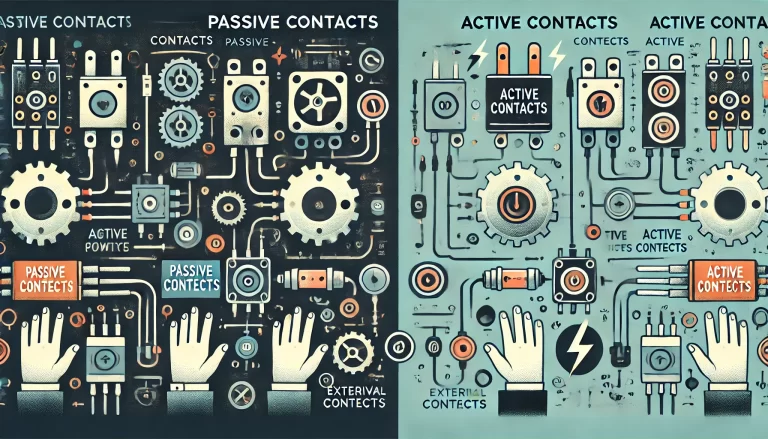Passive signal and active signal
1. Definition of passive signal and active signal
Active and passive refer to whether there is a power supply, which is used to distinguish whether the signal instrument needs to be powered. Analog signals are all active, whether they are two-wire, three-wire or four-wire signals.
Two-wire and three-wire signal instruments are powered by 24VDC; the power supply circuit and signal circuit of four-wire signal instruments are independent, the signal is isolated, and usually not grounded. Instruments powered by 220VAC cannot use the common line as the current return line, so they must be four-wire.

2. How to receive passive and active signals
Two-wire and three-wire analog instruments and digital instruments (DCS, PLC) have power supply terminals and can be directly wired. Sometimes, in order to separate the power supply of field instruments from the power supply of card components, the field instruments are powered separately, but the common terminals must be connected together.
Sometimes, they are connected together by grounding the power supply device. The power supply of four-wire instruments is separate, usually in isolation, and there is no common terminal.
Passive Contacts And Active Contacts
1. Definition of passive contacts and passive contacts
Strictly speaking: the contact signal is a constant voltage signal, which is used to trigger the signal receiving instrument (for example: switch signal input, intermediate relay) or drive instrument (for example: solenoid valve, magnetic switch).
In the analog logic circuit TTL, it is specifically called “level”, and the signal nature is also different from the external circuit, which is not discussed here.
The contact is only a component that connects or interrupts the signal. The on and off state of the contact determines the on and off state of the signal, so it is broadly called a contact signal. In order for the signal receiving instrument to receive the “on, off” or “on, off” electrical signal, the contact or switch must be powered. It may be powered by the signal sending end (with power supply, called active contact), or it may be powered by the signal receiving instrument (without power supply at the signal sending end, called passive contact). This is the origin of active contacts and passive contacts. As for “dry” and “wet”, they are just borrowed foreign words.
The switch signal is driven by external physics or electricity, and there are monostable and bistable states. Monostable contacts are divided into normally open and normally closed, such as buttons; bistable contacts have no “normal” state, but have two stable states, either open or closed, such as daily electricity switches.

2. Common contact signals
Common passive contact signals:
① Various switches such as limit switches, travel switches, foot switches, rotary switches, temperature switches, liquid level switches, etc.;
② Various buttons;
③ Outputs of various sensors, such as sensors in environmental power monitoring: water immersion sensors, fire alarm sensors, glass breakage, vibration, smoke and condensation sensors;
④ Outputs of relays and reed switches.
The most common active contact signal:
① Connect the above dry contact signal to the power supply, and then use the other pole of the power supply as the output, which is the active node signal. The commonly used wet contact voltage range in industrial control is DC0-30V, and the standard is DC24V; the usual wet contact voltage range in the secondary circuit of electrical equipment is AC110-380V, and AC220V or AC380V wet contacts are commonly used.
② It is also possible to use TTL level output as a wet contact; in general, TTL level needs to have a buffered output, such as: 7407, 245, 244, etc., to form a loop with VCC, etc.; 244, 245 can also form a loop with gnd; in order to drive the remote optocoupler.
③ Collector output and VCC of NPN transistor.
④ Collector output and VCC of Darlington tube.
⑤ Output of infrared reflection sensor and through-beam sensor.

3. The difference between passive contacts and active contacts
Active contacts and passive contacts are distinguished by whether the contact end is powered or not. The only difference is which instrument end is powered. The power supply voltage is equipped with the trigger voltage of the signal receiving instrument or the power supply voltage of the driving instrument. In principle, it can be any voltage, but it must meet the load specifications of the contact. It can be direct current or alternating current. If alternating current is used, it has no polarity.
When wiring, attention should be paid to safe use of electricity and signal interference. It cannot be connected casually. Especially when dealing with electrical contacts
